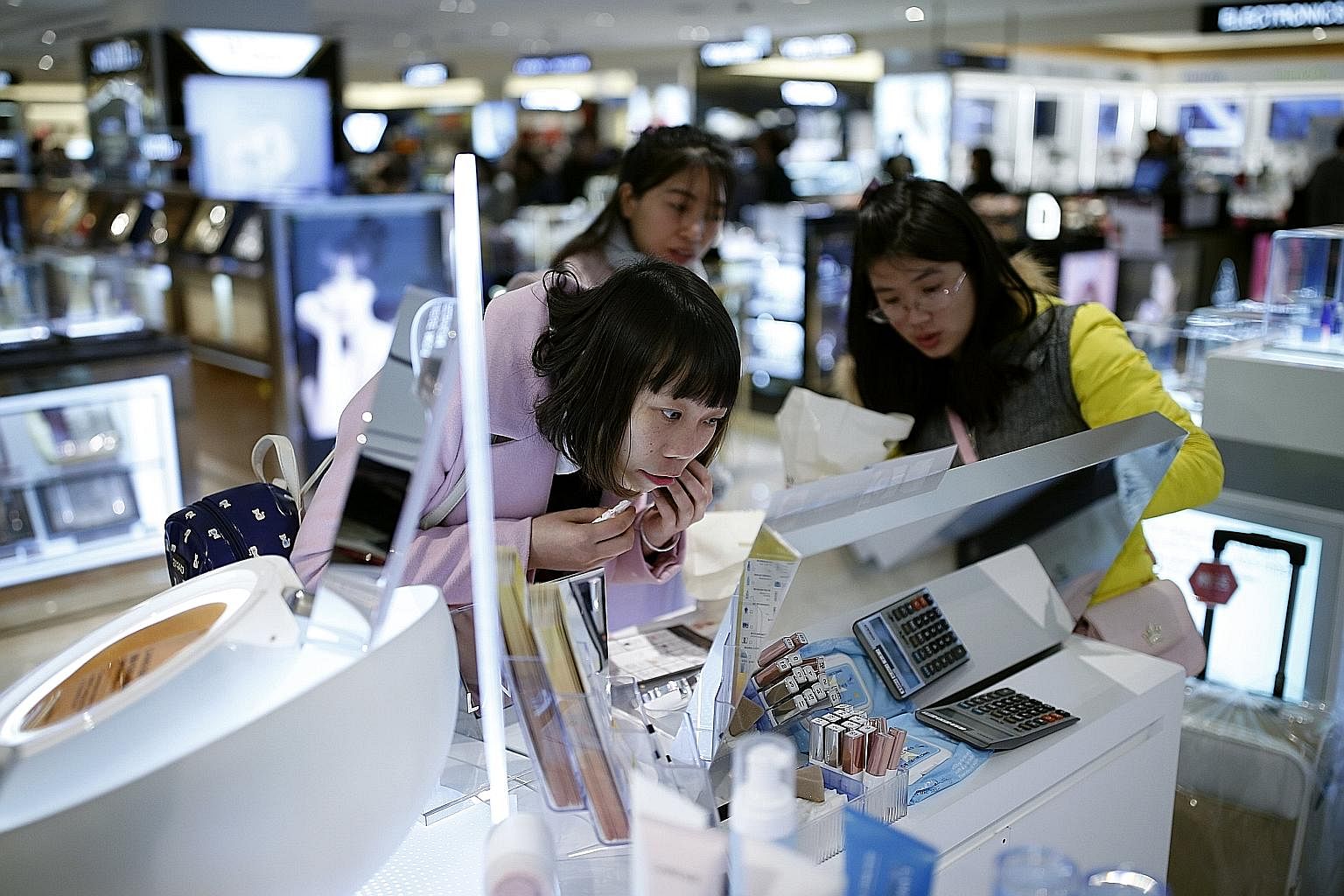Chinese travellers overseas have been making the news by snapping up items such as Japanese toilet seats, Korean cosmetics and Australia-produced milk powder, for their better quality and wider variety.
Back home, the Chinese people's growing affluence is also changing their consumption pattern, with many turning to haitao, or cross- border e-commerce shopping.
According to a recent report by McKinsey, a management consulting firm, such cross-border shopping amounted to an estimated 259 billion yuan (S$54 billion) last year, more than 6 per cent of China's total consumer e-commerce, and it is growing at more than 50 per cent every year.
Chinese consumers' penchant for foreign goods shows up a crinkle in China's economy - its manufacturers have failed to keep up with the changing demands of its increasingly savvy and affluent consumers.
And this is what Chinese President Xi Jinping is trying to fix, among other things, in his not too well understood - or received - supply-side structural reforms, which he first gave voice to last November.
Chinese companies must innovate and come up with products which meet the demands of the people, he said, citing Chinese smartphone makers - like Xiaomi and Huawei, which each claims a market share of about 15 per cent - as the kind of companies that the world's second-largest economy needs.

These supply-side inadequacies have been identified by Mr Xi as key problems ailing the economy.
Problems aside, he also appears worried about the resistance to his reforms, as seen in a CCTV news clip where he was quoted as telling government officials not to "wait, waver, hide or hesitate" when pushing forward the reforms.
Prior to that, the People's Daily on May 10 published a lengthy 20,000-word speech he made in January, carrying the same message.
There is reason for worry that the message is not getting through. The Chinese economy stabilised in the first quarter of this year, thanks to a record 4.6 trillion yuan credit binge, which boosted investment and industrial output.
Another People's Daily article, published on May 9 and quoting an "authoritative person" - thought by some to be referring to Mr Xi - warned against relying on investment and debt to drive growth, which could lead to recession.
"China seems to realise that it cannot grow at the same pace through increasing the workforce or by even more investment, so it needs to increase the efficiency of use of workers and capital," said Mr Richard Jerram, chief economist of Bank of Singapore.
But Mr Xi made it clear that his brand of supply-side reform is fundamentally different from those pursued by the West in the early 1980s, notably by then US President Ronald Reagan and British Prime Minister Margaret Thatcher.
And he warned against interpreting it as a neoliberal policy, which suggests shifting control from the state to the market.
Mr Xi said his policy goes beyond using tax cuts to boost productivity and the supply of goods. Instead, it involves a series of measures, including driving innovation, developing the real economy - the part of the economy that produces goods and services - and improving people's lives.
However, like it or not, for the reforms to work, there would have to be more competition and a stronger reliance on market forces to allocate resources, said Mr Jerram.
China has a large state sector, based on the old growth model of investments in heavy industry and construction. Unable to adjust to the changing demands, they are at the heart of the overcapacity that is plaguing the economy.
Reforms in this area could simply mean allowing these enterprises to fail.
Consequently, China may suffer from massive unemployment as workers are displaced from these inefficient sectors - such as steel and coal-mining.
"Politically it seems difficult for China to accept large adjustment costs, which will limit the speed that they can squeeze inefficient firms," said Mr Jerram.
That could explain why there had been little progress on the ground, which Mr Xi noted both in his January speech and the May 16 TV newscast.
There are other reasons for resistance to the reforms.
Dr Yan Se, a senior China economist based in Beijing at the Standard Chartered Bank, pointed out that supply-side reforms will yield results only in the long term. Those responsible for achieving China's short-term growth targets are, therefore, reluctant to drive these reforms.
"It's much easier to hit the 6.5 per cent growth rate by stimulating the housing market and giving credit to the firms," said Dr Yan.
He added that while Mr Xi has outlined the areas that he wants to cut - excess capacity, housing inventory, financial leverage and business costs - a lot of details of how to carry them out are missing.
The Chinese leaders are likely to resort to the administrative powers of the government to make things happen, like giving quotas for how much capacity to cut in each province, as opposed to allowing market mechanisms to come into play. "Using the administrative powers to advance the reforms is less effective and may create more distortions," said Dr Yan.
Another more subtle challenge is that by putting increased reliance on the market to allocate resources, the Chinese leadership will have to accept a loss of control over outcomes, said Mr Jerram.
"Unsurprisingly, this is difficult for an authoritarian regime to accept, as we have seen in its policy towards the equity market and the exchange rate over the past year," he added.
The Chinese government had stepped in to try to stabilise both the stock and currency markets in January this year, in an attempt to control the sharp sell-downs. But their actions only spooked investors further, sparking widespread panic over the health of China's economy.
Dr Yan observed that the government officials are probably taking time to build consensus, and it would be some time before any deep reforms will start to take off.
"Hopefully, in the next five years, we will see some concrete measures being rolled out. If China misses this window of opportunity (to make structural changes to its economy), the outcome could be quite problematic."

